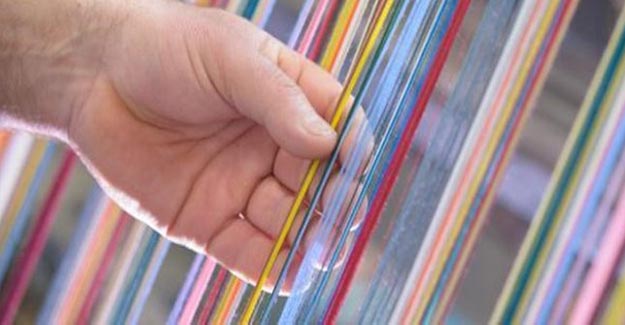
IndRa Report Highlights Indian Textile Industry's Recovery
Cotton prices surge The cotton prices surged by 7-10% month on month (MoM) during January 2021, led by a strong export demand for cotton yarn. The international prices rose by 13-17% year on year (YoY), led by the buoyant China demand for US cotton, which is having a rub-off effect on cheaper Indian cotton prices. The Committee on Cotton Production and Consumption's estimation for the current season cotton crop is 28.96 million bales (480lb), 3% higher than Cotton Association of India's estimates. India's cotton exports increased 27.5% YoY to 0.8 million bales (170kg) during December 2020 and 96% YoY during October-December 2020. Overall, cotton exports constituted less than 10% of the arrivals up to December 2020. However, the committee estimates exports to reach 20% of the total arrivals during current season. CCI procurement rate slows down During January 2021, cotton arrivals rose 4% YoY, however remained lower 12% MoM on account of lower procurements by Cotton Corporation of India (CCI). Furthermore, CCI procured 17.6% of the available cotton as against over 50% in December 2020, as the cotton prices were above the minimum support price. During the current cotton season till January 2021, CCI procured almost 40% of cotton arrivals from mandis across markets. Rising exports push up cotton yarn prices Domestic yarn production increased in January 2021, led by a strong export and moderate domestic demand during December 2020. While yarn production was substantially lower on a YoY basis up to 8MFY21, exports increased by higher single digits YoY due to a healthy demand from neighbouring countries. China's demand for Indian yarn resumed to pre-Covid levels during November-December 2020, as against a volume drop from Bangladesh and Vietnam during same period. During January 2021, cotton yarn prices increased 15% MoM and 30% YoY, resulting in higher gross margins. The higher cotton yarn demand is attributed to the global supply curbs on Xinjiang region (China) cotton, which is benefitting Indian domestic spinners. While exports are likely to moderate during January-February 2021 ahead of Chinese new year, demand resumption is likely by March 2021. MMF production on recovery mode During November 2020, viscose fibre players' production levels grew 3% sequentially; however, spun and texturised yarns production levels declined 8% YoY and 1.3% YoY. However, the agency expects MMF players to have recorded above-par levels in 3QFY21 on back of the pent-up and festive demand which is likely to sustain over 4QFY21. Fibre prices continued their upward MoMentum in January 2021, led by a strong 7.4% MoM increase in crude prices. The cotton to polyester staple fibre spread increased marginally in January 2021 on an MoM basis and was at all-time high levels, supporting the likely switch in demand from cotton to MMF. Furthermore, polyester staple fibre exports volume declined by 23% MoM during November 2020, on back of the second COVID-19 wave in the US. Increase in fabric demand and prices led by festive demand Cotton knitted fabrics production decreased marginally MoM, although remained 22% YoY higher during November-December 2020. However, the production of woven fabrics increased marginally during the same period, after substantial MoM growth during September-October 2020 coupled with lower export volumes. The blended fabrics production rose 8% YoY in November 2020, led by the festive and marriage season demand coupled with the re-opening of office spaces. Apparel exports declined in December 2020 Apparel exports declined in December 2020, after recovering over September-November 2020 on a YoY basis due to the impact of a second wave of COVID-19 in the US and Europe. This would also impact the near-term order book position of ready-made garment exporters for the upcoming fashion season. During November 2020, knitted apparels volumes remained stagnant with realisations gaining by high single digit YoY basis; on the contrary, woven apparels volumes increased by 8.2% and realisations fell substantially YoY basis. During 2020, India exports to the US fell 20%-25% YoY in both volume and value terms. Healthy performance of home textile players Home hygiene ergonomics continued to push the wellness products demand during 3QFY21, leading to a 20-30% YoY rise in the top line for home textile exporters. However, Rebate of State and Central Taxies and Levies being replaced by Remission of Duties and Taxes on Exported Products w.e.f. 1 January 2021 could lead to a margin contraction in the near term, given the probability of lower incentives in the new scheme. The government may consider to retain the incentive levels to that of Merchandise Exports from India Scheme. The major players in this segment operated at close to optimum capacity levels, led by a surge in demand, and have announced operating capex relating to de-bottlenecking or modernisation. Furthermore, the segment continues to be the beneficiary, as the sourcing model is changing to a China Plus-one model.
Textile Excellence
If you wish to Subscribe to Textile Excellence Print Edition, kindly fill in the below form and we shall get back to you with details.








